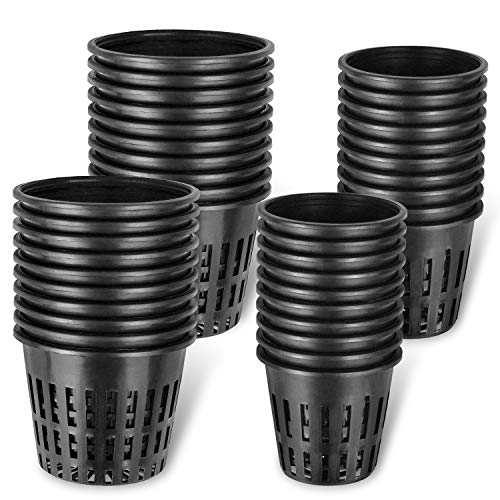Aeroponics is an interesting approach to growing plants that has taken the horticultural world by storm. Whereas traditional gardening requires a bed of soil and a trusty trowel, aeroponics reduces gardening to its bare minimum for maximum results.
Aeroponics is a method of growing plants without a growth medium, such as soil or water. An aeroponic system suspends plants by their stems so that their roots are exposed to air. The roots are then sprayed periodically with a nutrient rich mist.
Aeroponic systems possess many benefits for the plant and the gardener. Although there are some drawbacks related to cost and maintenance, the effectiveness of aeroponics has lead to its massive popularity.
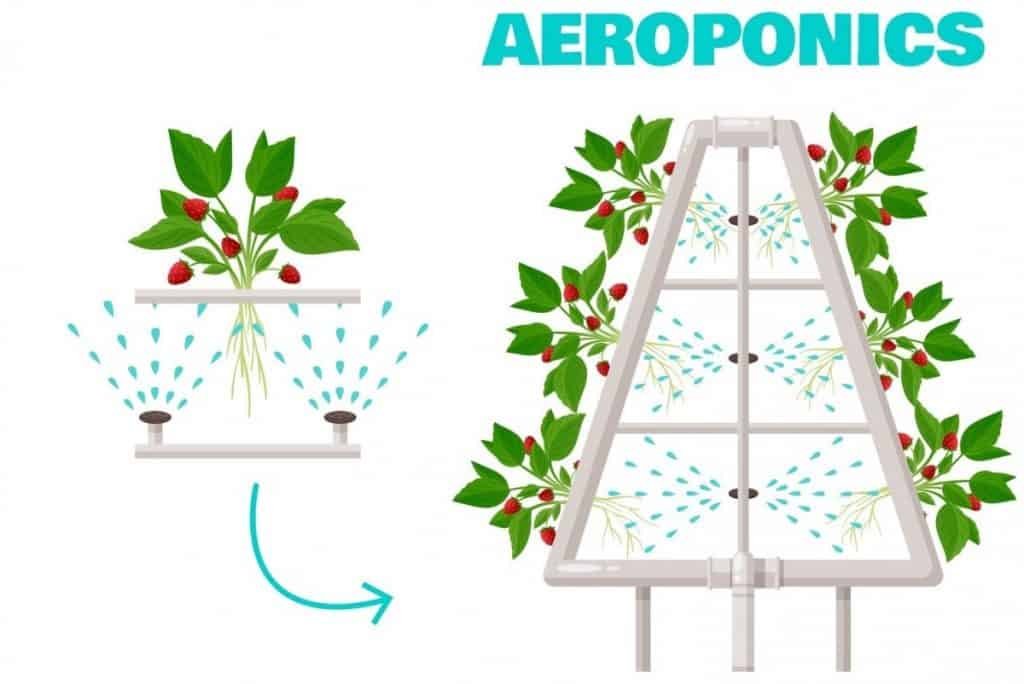
What is Aeroponics?
Aeroponics literally means “air labor.”
When a plant’s roots are exposed, air can get to them very quickly. This means that plants grown by aeroponics can grow very rapidly.
Aeroponics was developed fairly recently. It was first described in 1911, but the first commercial model only came about in 1983. In its beginning stages, aeroponics was primarily used as a way to examine root systems.
But it was eventually found out that aeroponics could also be used to facilitate plant growth. This is because of the amount of oxygen exposure a plant’s roots receive through aeroponic systems.
Just like humans, plants need a lot of oxygen to grow. When they’re in the soil, it’s hard for them to get oxygen through their roots. They usually have to get oxygen through their leaves.
In an aeroponic system, plants get oxygen through both their leaves and their roots. This means that plants can grow much more quickly. To prevent the roots from drying out, they are sprayed with mist.
Aeroponic systems can also regulate how much carbon dioxide a plant receives. This means that it’s easier to control the plant’s photosynthesis.
This is good for scientists, but it’s also good for farmers and gardeners.
Aeroponic systems have been used by NASA and agricultural researchers. They are good for conducting studies in space because their environment is very easy to control.
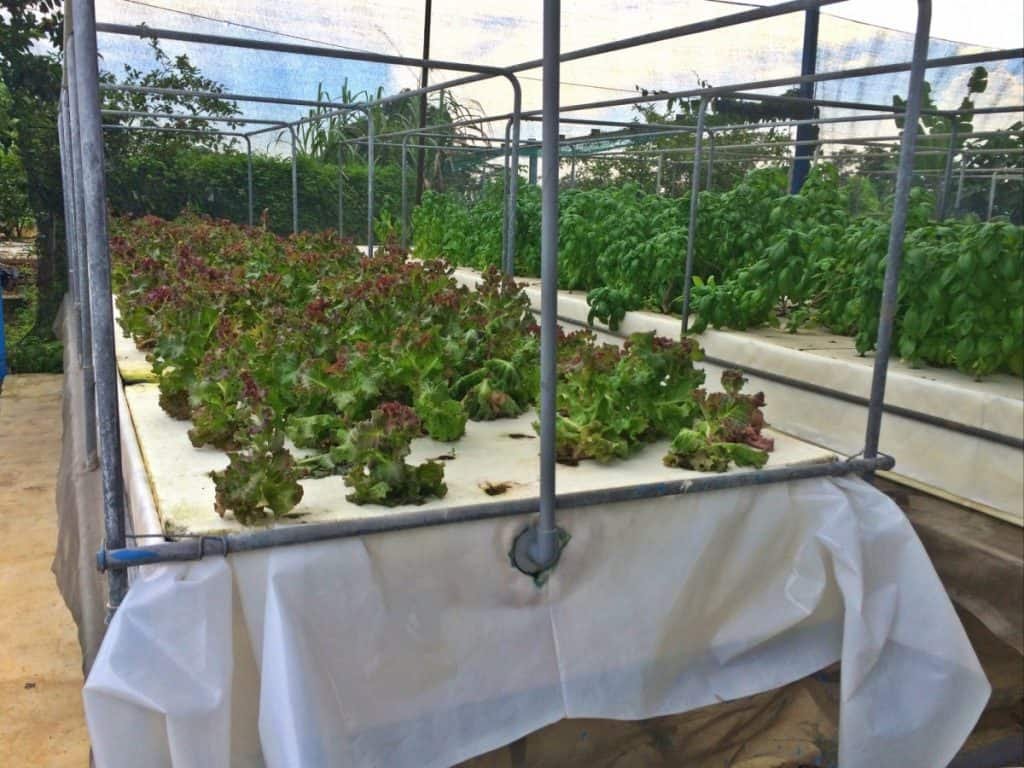
Some cloning technologies have also been developed through aeroponics. The root samples needed for cloning are easier to extract from open roots.
The price range for aeroponic systems varies widely. You can build your own model for around $100, but commercial models can cost over $1000. These commercial models usually contain sophisticated timing computers, as well as functional covers and slots that help gardeners see how their plants are doing.
The materials for making an aeroponic system will be covered later in this article. To get a good idea of how much an aeroponics system costs, check out our article, Are Aeroponic Systems Expensive.
Although aeroponic systems require a few more materials than a traditional garden, the benefits are well worth it.
For one thing, aeroponic gardening requires substantially less water and nutrients than regular gardening. One study claims that it can reduce water usage by up to 95%.
Aeroponic systems are also able to contain more plants in less space and reduce disease spread. Some more benefits will also be outlined later in this article. You can also read more about The Advantages of Aeroponics in our article.
As you can see, aeroponic systems are worth looking into. If you are looking to buy one or make your own, though, it is first necessary to understand how they work.
The basic principles of aeroponics are easy to understand, but they may be tricky to execute in real life. Here is a basic breakdown of how aeroponic systems work.
Here’s a recent video showing how I transplanted and rooted tomatoes and cucumbers in my aeroponic bucket system
How Do Aeroponics Systems Work?
Aeroponic systems come in many different forms, but there are some mainstays in all of these systems: they all use some form of mister to provide hydration to roots while they’re suspended. Some of these systems are also vertical so that the water drips down by gravity.
Horizontal models look similar to hydroponic systems. There is a support system made of plastic that holds the plants and a reservoir underneath to contain water.
These systems all work in the same way. They rely on oxygen and water primarily, instead of soil. Because of the way that these systems are built, they are able to contain many plants. It is also easier to prevent disease because the plants aren’t connected in any way.
Soil usually provides nutrients to a plant through its roots. This means that the plant has to expend a lot of energy to get its roots to the place in the soil with the most nutrients.
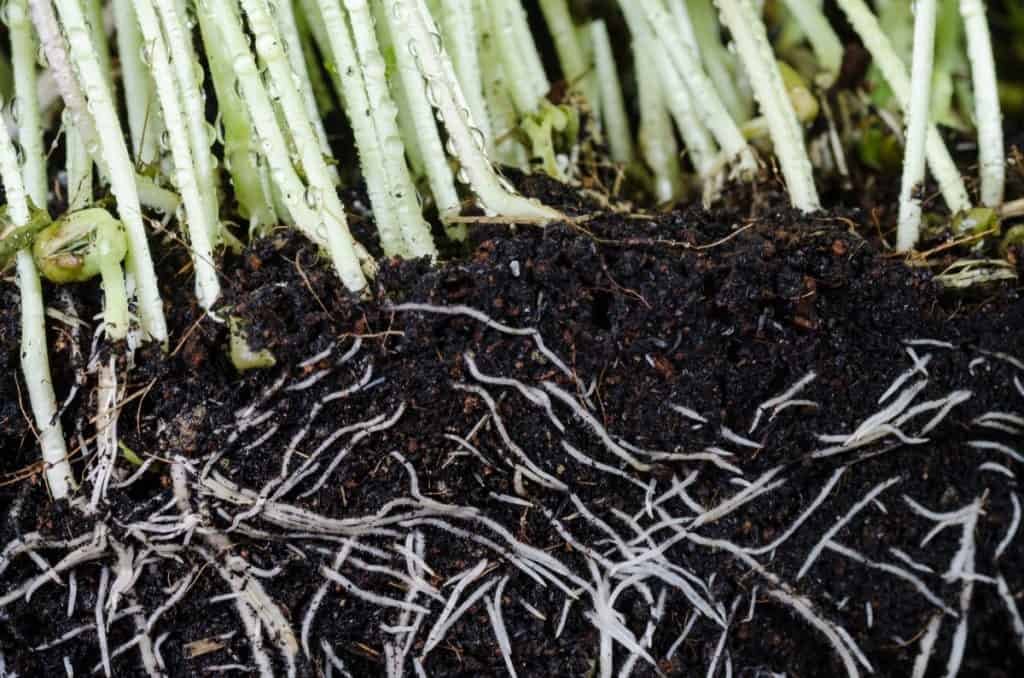
But aeroponics eliminates this labor by transporting nutrients directly to a plant’s roots via atomized water.
Atomized water is water that is divided into very tiny water droplets. It can also be called “mist” or “fog.” While hydroponics systems place roots directly in a pool of water, aeroponics systems spray roots with mist to maximize oxygen exposure.
If a water droplet is too big, then the plant’s roots don’t get enough oxygen. On the other hand, water droplets too small can produce “excessive root hair” (Souce).
The nutrient and pH balance of the atomized water has to be very precise.
One of the main hurdles against widespread usage of aeroponics is probably a lack of knowledge concerning various plants’ nutrient needs. Luckily, this knowledge is becoming more widespread as aeroponics’ popularity increases.
The timing of the water spray should also be consistent. This is both to ensure that the roots don’t dry out, or desiccate, as well as ensure that the roots get the nutrients they need. Most systems spray roots every few minutes.
The materials needed for an aeroponic system are:
- A support structure,
- Water reservoir,
- Water sprayer
- Water pump on a timer
- Water tubing.
The support structure holds up the plant in a basket or “closed cell foam plug”. It also holds in the air and keeps light out. The only part of the plant that should be exposed to light is its canopy i.e. its leaves and stem.
The water reservoir holds the water that is sprayed. It can also collect the excess water that drips off of the roots after they absorb what they need. Both the reservoir and tubing need to be cleaned periodically to prevent mold or algae growth.
Types of Aeroponic Systems
There are two basic types of aeroponic systems: high-pressure and low-pressure.
Both of these systems have different benefits and uses. The main difference is how much pressure they use, but there are some other differences to note.
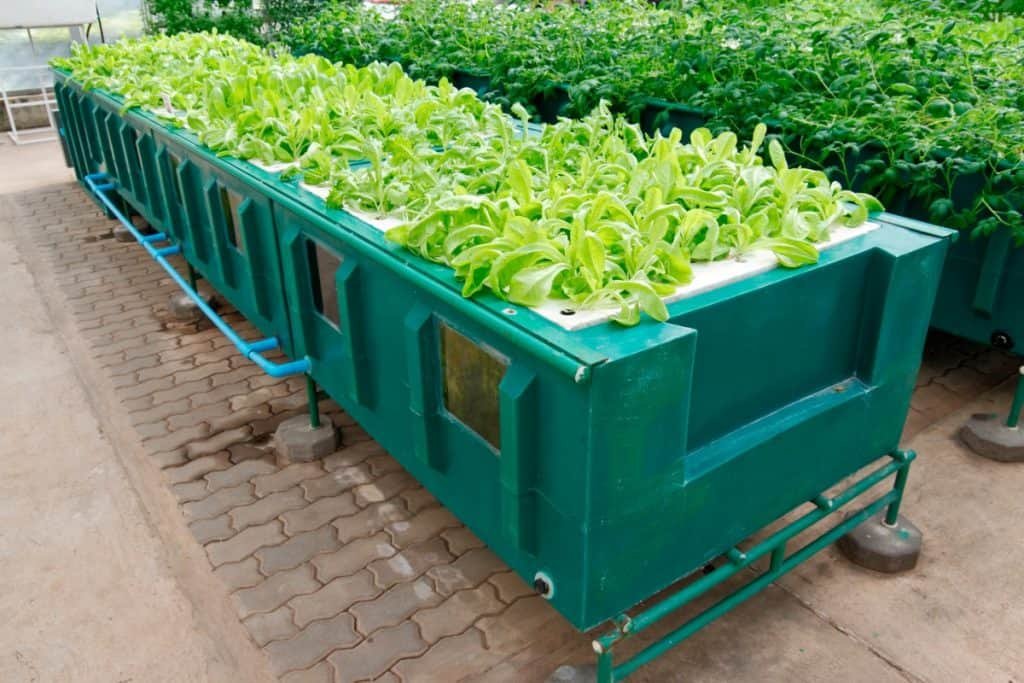
Low-Pressure Aeroponics
Low-pressure aeroponics (LPA) systems are easier to set up than high-pressure systems. For this reason, they are often preferred either by people who want to build their own system or by people who have smaller gardens to manage.
Low-pressure aeroponics systems require a basic sprinkler system for misting. Most hose attachments and irrigation systems have a mist setting, so they’re easy to build yourself.
Low-pressure aeroponics systems produce larger water droplets than high-pressure systems.
As previously stated, these droplets don’t allow for as much oxygen. Your plants will grow more quickly, but they may not be as enriched as in high-pressure systems.
For these reasons, LPA systems are often utilized by growers looking for high-yield, rather than high quality. Low pressure systems are perfectly fine for many plants.
Gardeners looking to develop high-quality plants should look into high-pressure systems though.
High-Pressure Aeroponics
High-pressure aeroponics (HPA) systems require a more expensive water pump. These pumps are called “diaphragm pumps”. Diaphragm pumps are able to generate very high pressure within a water tank. Pressures can range from 80-100 psi.
When water is processed through sprayers with such high pressure, the water droplets are much smaller than they would be with low-pressure systems.
Water droplets can be as small as 50 microns, which is 1/25,000th of an inch.
There are many benefits to spraying roots with droplets so small.
One benefit is more oxygen. When there is more space between water droplets, roots are able to consume more oxygen with each spray. Roots are also able to absorb microscopic water droplets more quickly. This allows the plant to expend less energy absorbing and more energy producing fruit or leaves.
Most HPA systems are meant for commercial use because of their high cost. It is also harder to maintain an HPA system because of the pressure required and plant maintenance.
If the spray nozzle gets blocked or the droplets collect together on the roots, an HPA system becomes no more effective than an LPA system.
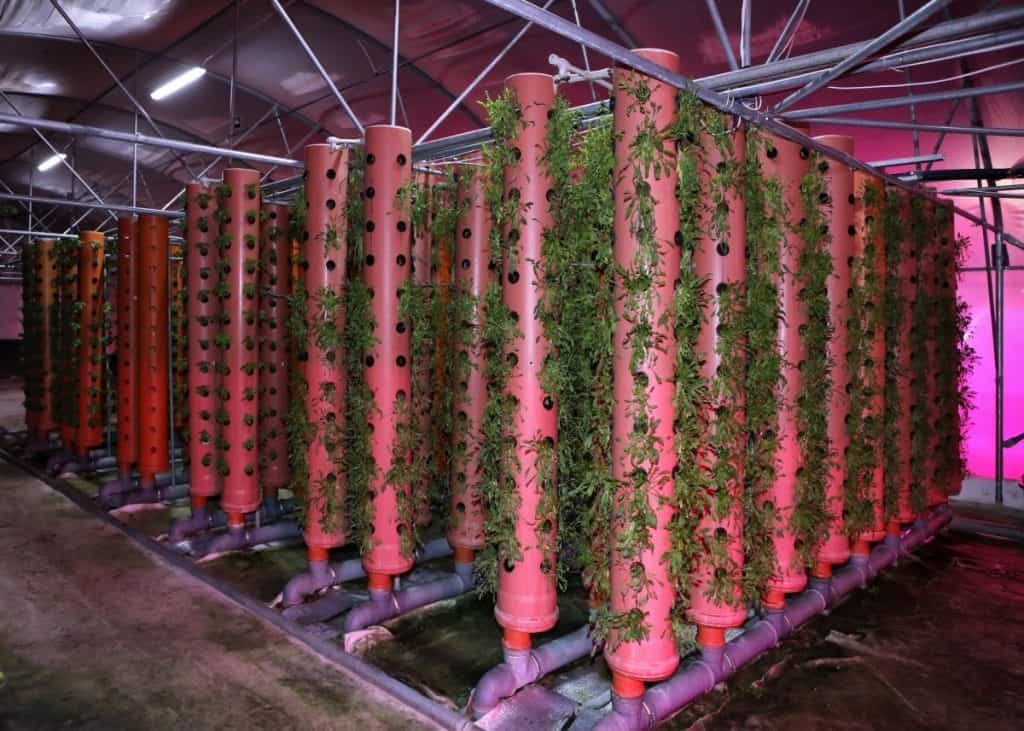
It is also slower to produce plants with an HPA system. This is because microdroplets tend to produce root hairs rather than root structures. A root structure is necessary for a plant to reach maturity.
Despite these setbacks, an HPA system is probably the best way to quickly deliver nutrients to plant roots. Plants that are maintained with an HPA system often have a higher yield.
HPA systems also decrease the amount of water, pesticides, and fertilizer used during plant growth.
When comparing the systems, most people will look mainly at the cost and ease of use. On these points, an LPA system easily wins.
It’s important to note the potential cost saved over time using an HPA system. You may end up using fewer materials to produce more plants. As a hobby, though, LPA systems should work fine.
Advantages of Aeroponics
There are many advantages of aeroponics. I’ve touched on a few so far but will cover some of the main benefits that aeroponic systems have to offer.
Reduced Water Usage
The water reservoir in an aeroponic system ensures that no water is wasted. Research has shown that “aeroponic systems can reduce water usage by 98%” (Source).
This is a major difference from traditional garden beds. Soil transports water to roots, but the water often runs off or completely misses the roots. When water sprayers are optimally placed, water has no choice but to go straight to the roots.
Faster Plant Growth
Plants can grow rapidly when they’re receiving oxygen straight to their roots.
Soffer and Burger were two scientists who studied the effects of different oxygen concentrations. They tested a plant by putting the bottom of the roots in a water solution, misting the middle of the roots, and placing the tops of the roots in the air with no water.
They found that the middle section of the roots always grew more compared to the other two sections. This is why aeroponic systems can grow more quickly than hydroponic or soil systems.
Higher Yields
More oxygen also means higher plant yield. Whereas plants usually have to expend energy on their roots to reach nutrients, plants in aeroponic systems have nutrients directly delivered to their roots in digestible droplets.
NASA has found that droplets ranging from 5-50 microns are best for plant growth. This is why HPA systems are so effective.
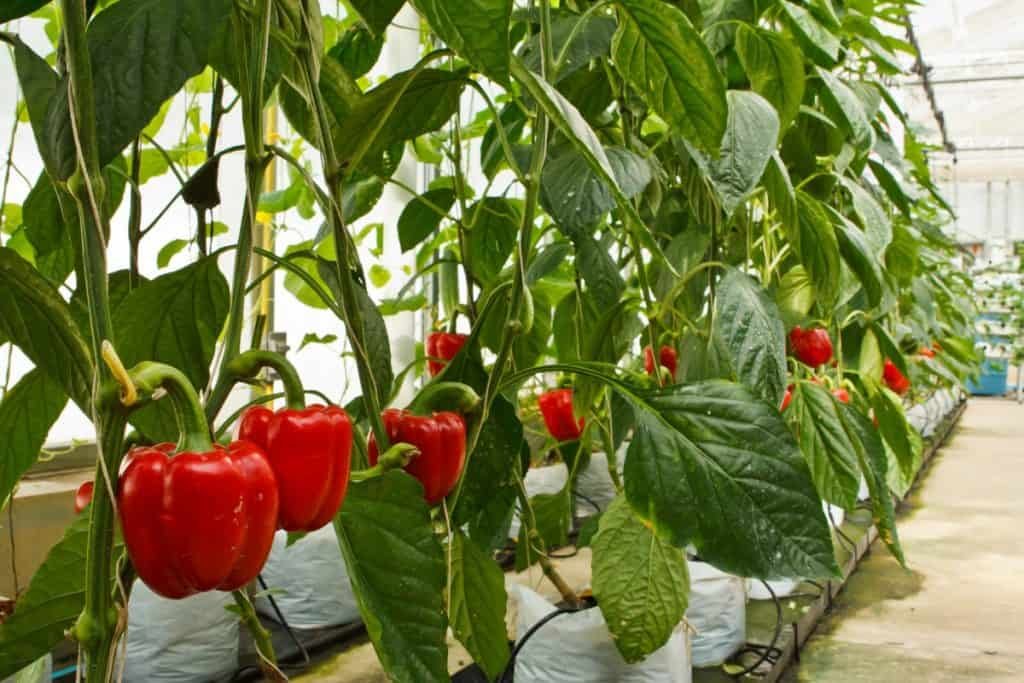
Fewer Pests
Pests aren’t as likely to get into aeroponic systems because the systems are airtight. This reduces the need for pesticides.
The American Scientific Journal states that pesticides are unnecessary in aeroponic systems. (Source) This is good for the environment, but it’s also good for the gardener.
Low Maintenance
Although it may be difficult to initially set up an aeroponic system, they don’t require much maintenance after they’re set up.
Aside from adding nutrients and ensuring the water reservoir is full there isn’t much required in the way of maintenance.
The timer system takes any guesswork out of how often to water your plants. Once a sprayer is set on a timer, it only needs to be checked periodically for blockage or malfunction.
Unfortunately, any kind of blackout could be detrimental to your plants. This is why it’s necessary to connect your spraying mechanism to a reliable power source, such as a generator.
You should also clean your sprayer and tubing with hydrogen peroxide occasionally to prevent blockage.
Easy Harvesting
Plants that are grown in an aeroponic system are much easier to harvest. You don’t need to pull at a plant stuck in the soil since the only thing supporting it is a piece of foam.
Systems are also height adjustable, so you don’t even need to bend down. And you don’t have to wear gloves or wash the plants much after harvesting since they haven’t been sprayed with any toxic pesticides.
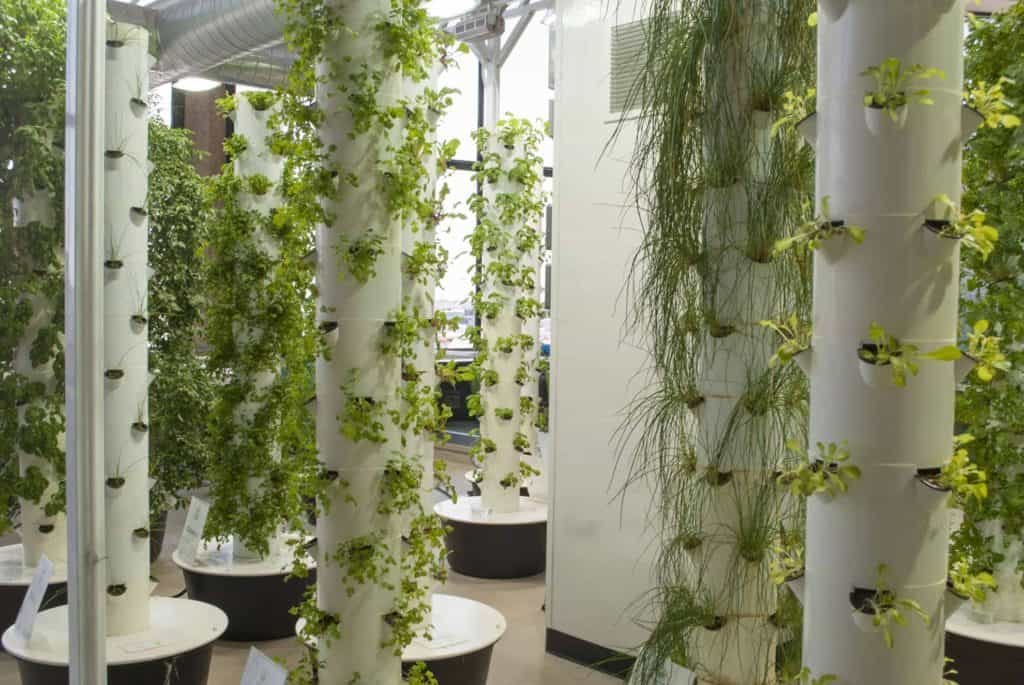
Scalability
There are many different aeroponic models to choose from, depending on the scale of your operation.
If you are growing for yourself or your family, you probably don’t need a full-scale aero farm. You could simply set up your own table with a reservoir. Or you could buy a vertical system if you’re looking to branch out.
It’s very easy to get invested in aeroponics, so many gardeners have made the switch from a traditional greenhouse to an aeroponic greenhouse.
Whether you’re growing in your apartment or using aeroponics for a section of your farm, aeroponics is a great choice. Systems like the Tower Garden are perfect for the home gardener or even a commercial setup.
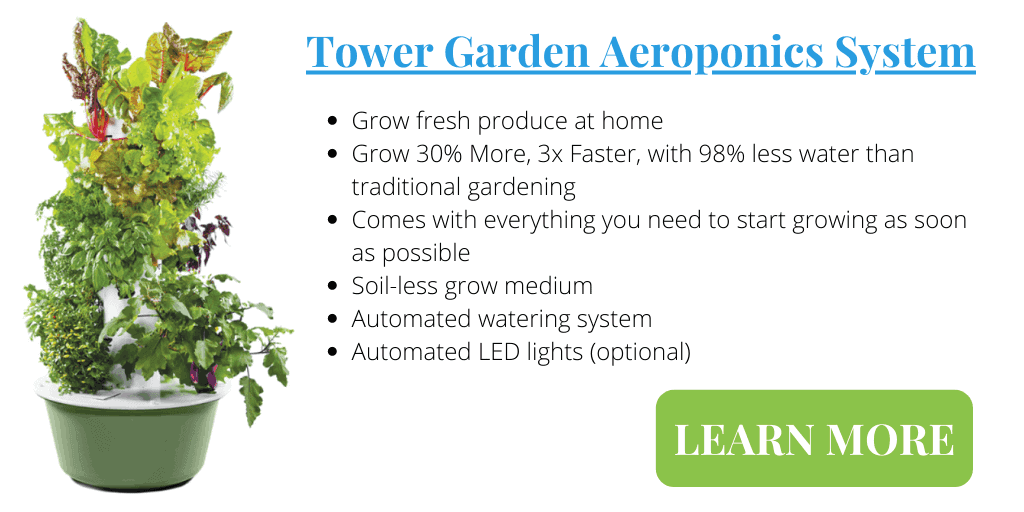
Parts of an Aeroponic System
There are several parts to an aeroponic system. Different models may contain some or all of these components. But they’re all important to know so you can make the most of your own system.
Plant Chamber
The plant chamber contains the air in an aeroponic system. The plants are held suspended above it and the water reservoir is usually below it. In some vertical models, though, the water is sprayed from the top so that gravity does the work.
Plant chambers should be airtight and lightproof. Roots need a lot of oxygen and water, but they shouldn’t get any light.
A plant chamber can be as simple as a plastic container, but some are more sophisticated.
Water Pump
The water pump is what transports the water in the water reservoir through the water tubes to spray onto the roots. Water pumps are the main difference between high and low pressure systems.
High pressure systems have diaphragm pumps while low pressure systems have regular water pumps.
Water Reservoir
The water reservoir contains the water solution that’s necessary to feed your plants. It’s important to research what kind of nutrient solution works best for the particular plants that you intend to grow.
Plants in general need soft water instead of hard water (fewer minerals instead of more minerals).
You can measure the mineral content of water by measuring its electrical conductivity with an EC meter. Different plants need different EC counts, for example, “lettuce grows best with an EC of about 1.6” (Source).
Another thing to consider is pH. Most plants prefer a pH between 5.8 and 6.3, which is slightly acidic. You should test the pH of your system periodically to make sure it’s at the right level.
Automatic Timer
Water pumps should be placed on automatic timers so that plant roots are continually sprayed.
Plants in an HPA system can die within minutes if they aren’t sprayed. This is why a timer is so important. Most timers spray roots every few minutes. These mist cycles are very short, though; they are usually 3-5 seconds.
Roots shouldn’t be dripping but slightly moist. Timers are important to keep roots from getting dry or too wet.
Some more sophisticated models also allow for temperature control. They can spray roots if they are getting too warm.
You should be sure to observe your plants to see what timing works best for them. Some aeroponic models also allow you to change the timing of mist cycles. This way, you can change the cycle if your plants get too wet or too dry.
Water Hose and Sprayer
There are many different kinds of nozzles to choose from that create different size droplets.
Standard sprinkler heads should work fine for LPA systems. They have regular size holes that allow for a sprinkle or mist. These holes are also easier to unclog than models with smaller holes.
HPA systems have different requirements for nozzles. You should usually pick a full-cone nozzle pattern.
You shouldn’t use high pressure nozzles: the high velocity water that comes from these nozzles will cut off root hairs.
You should also “use a fine-mesh filter prior to your misting nozzles to prevent clogging” (Source).
The best size hole for HPA systems is between 0.016 and 0.025 inches. These sizes allow you to use less pressure and still produce the 5 to 50 micron size water droplet required. This water will truly be “atomized” according to most definitions.
As for hoses, the hose size shouldn’t be too large; you want to make sure that adequate pressure can build up more easily.
You should also prevent the hose from being too long. The best irrigation systems are those which expend less energy:
- They’re less likely to lose power,
- They’re better for the environment, and
- They’re better for your wallet.
Net Pots
Although net pots are commonly used for hydroponic systems to immerse in water, they can also be used for aeroponic systems.
Net pots are the pots that your plants will be contained in. They’re usually made of plastic and grip the stem of the plant, but they can come in many shapes and sizes.
Net pots sort of look like a miniature laundry basket or colander.
They have holes so the roots can receive air all the way up the plant and so any water that collects near the top of the plant is drained off.
Net pots also perform a process called “air pruning.” This is when roots that grow too far out of the pot fall off of the plant. This is healthy for the plant because it can reserve more energy for its main root system.
- Pack of 40 Black Flexible Net Pots: Contains 20 of each size (2 inch and 3 inch) for versatile...
- Perfect Fit: Slotted design fits snugly in 3 inch and 2 inch holes for secure planting.
- Healthy Roots: Holes in the bottom promote even drainage to protect seedlings.
Grow Lights
Grow lights are sometimes necessary for aeroponic systems when they can’t get any real sunlight. This could be during the winter months or if you are growing your plants indoors. There are different colors of light that do different things for plants.
Generally speaking:
- Red lights promote flowering. Too much red light, though, can produce scrawny plants.
- Blue light, on the other hand, promotes bushiness.
You should use these lights at different stages of your plant’s development: blue light for the vegetative stage and red light for the flowering stage.
The intensity of the light also matters. The light shouldn’t be too far away and should produce enough lumens.
Fluorescent lights are usually fine, but LED lights can be a great addition to your set-up. They produce a lot of light and there are some models which can change color. You should avoid sodium or halide lights; these lights get too hot for the plant.
You should also avoid getting the cheapest lights that you can. You’ll end up paying more for maintenance than what they’re worth.
- Cutting-Edge LED Chips for Unrivaled Performance:Introducing the Samsung LM301H EVO LEDs....
- 5-Year Warranty: Our LED Plant Lights are often copied but will never have our quality or...
- Ideal For All Growth Stages: Excellent full spectrum- white, blue, red and IR (3000K, 5000K,...
Nutrient Solutions
Nutrient solutions have already been touched on briefly, but there are a few more important tips to remember.
Nutrient parts come in either dry or liquid form. There are also different amounts of parts that you can use for different plants.
Three part solutions are usually the best. You can add different parts during different stages of plant development, but you shouldn’t mix the parts together.
This is because the nutrients “will react with each other in a bad way.” This is, again, why it is always best to read directions before using nutrients.
Your plants need a lot of nutrients to grow. The primary nutrients required are:
- Nitrogen,
- Phosphorus
- Potassium.
- Other minerals like calcium and iron are also necessary
You should look into the plant that you are growing or buy a nutrient pack that is meant for your plant.
What Can I Grow Via Aeroponics?
You can grow most plants in aeroponic systems. The most popular plants for aeroponics systems are tomatoes, marijuana, and herbs.
Growing tomatoes in an aeroponics system dramatically reduces the time needed to grow. You can also grow certain fruits like strawberries.
Most plants can benefit from aeroponics. There are a few plants which aren’t ideal for aeroponics like fruit trees.
But even root plants can be grown in aeroponic systems. Read about some of the Unique Plants you Can Grow with Aeroponics in our article.
Closing Thoughts
Aeroponics systems are more practical than most hydroponics systems for growing at home. They don’t have to take up much room, plants grow fast, and they’re easy to harvest.
Plus, you don’t have to worry about watering them every day. After your initial investment for equipment and set up it’ll be well worth it once plants start yielding. You can grow plants in an aeroponics system at any time and in any place.

